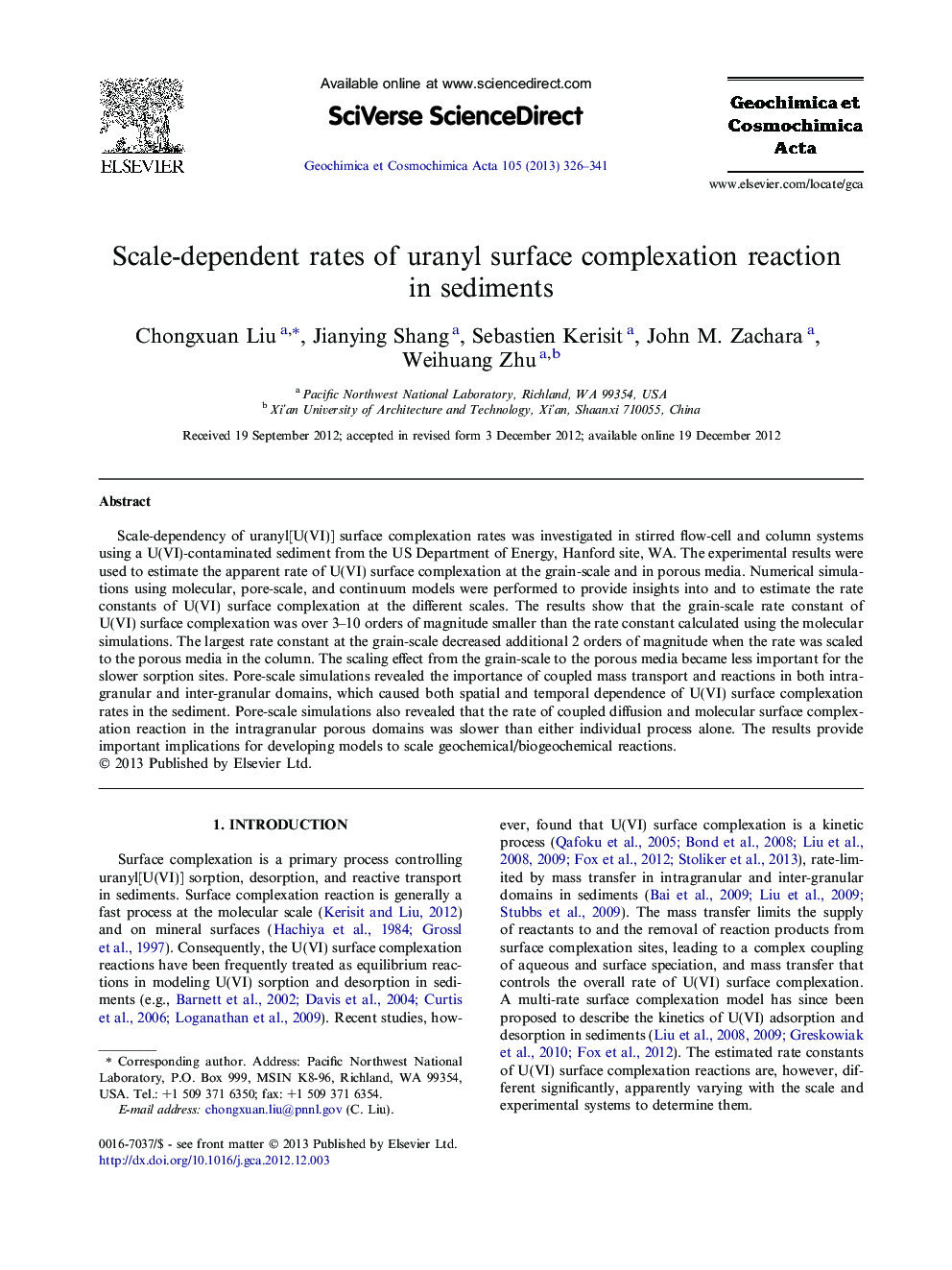| Article ID | Journal | Published Year | Pages | File Type |
|---|---|---|---|---|
| 4702556 | Geochimica et Cosmochimica Acta | 2013 | 16 Pages |
Scale-dependency of uranyl[U(VI)] surface complexation rates was investigated in stirred flow-cell and column systems using a U(VI)-contaminated sediment from the US Department of Energy, Hanford site, WA. The experimental results were used to estimate the apparent rate of U(VI) surface complexation at the grain-scale and in porous media. Numerical simulations using molecular, pore-scale, and continuum models were performed to provide insights into and to estimate the rate constants of U(VI) surface complexation at the different scales. The results show that the grain-scale rate constant of U(VI) surface complexation was over 3–10 orders of magnitude smaller than the rate constant calculated using the molecular simulations. The largest rate constant at the grain-scale decreased additional 2 orders of magnitude when the rate was scaled to the porous media in the column. The scaling effect from the grain-scale to the porous media became less important for the slower sorption sites. Pore-scale simulations revealed the importance of coupled mass transport and reactions in both intragranular and inter-granular domains, which caused both spatial and temporal dependence of U(VI) surface complexation rates in the sediment. Pore-scale simulations also revealed that the rate of coupled diffusion and molecular surface complexation reaction in the intragranular porous domains was slower than either individual process alone. The results provide important implications for developing models to scale geochemical/biogeochemical reactions.
